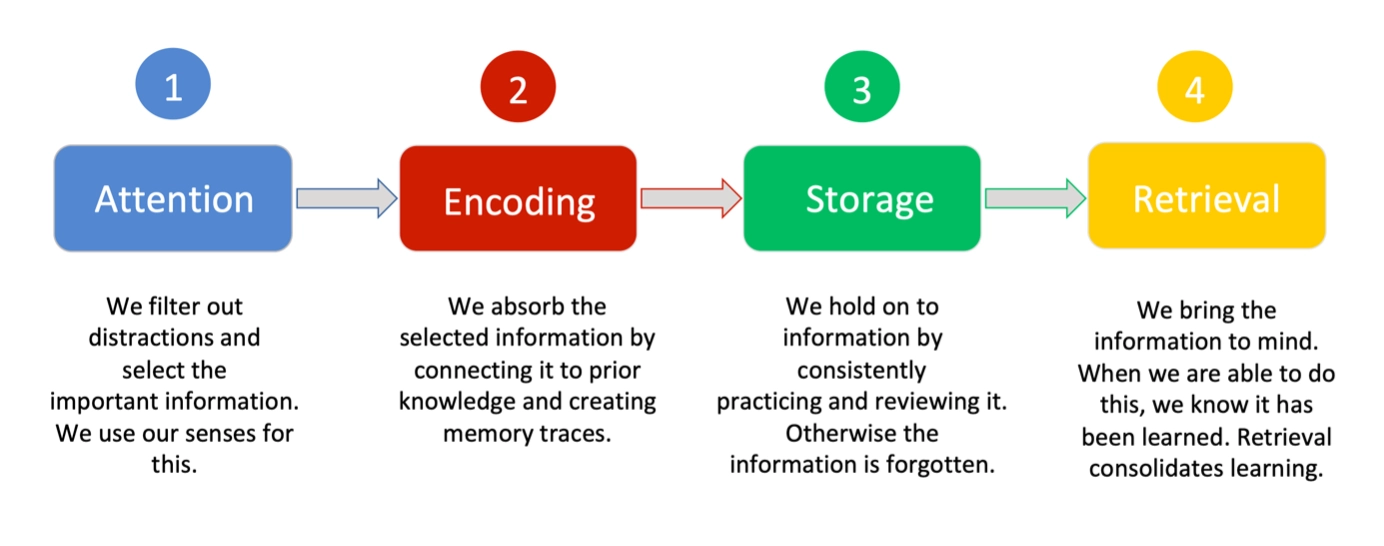No products in the basket.
Preparing Body & Mind for Exams
With a few weeks to go until the exams this is the perfect time to explore the optimum conditions for performance. These are Sleep …

The typical human brain is truly astonishing! It contains over 80 billion neurons (or brain cells) that carry messages through electrical and chemical signals. The neurons are connected together and create networks of communication with a storage capacity of a million gigabytes (enough to hold three million TV shows). When we learn something new, electrical currents fire up, and pass across synapses, between neurons and to different areas of the brain.
When we try out new learning tasks our brains carve out new pathways and these strengthen with practice. The more we practice, the faster the currents travel along their particular pathways, and the deeper the connections. Our brains are therefore continuously changing. But if we don’t practice the newly acquired knowledge and skills regularly, the connections become weaker.
To appreciate why some study strategies are more effective than others we have to first understand the learning process and the role of memory. We define learning as the process of acquiring knowledge and skills, transferring these to long-term memory, and having them readily available so that the learner can make sense of, and engage fully with, future problems and opportunities. The challenge then is to ensure that learning stimulates permanent change of some sort. There are four main stages of learning. These are: Attention, Encoding, Storage and Retrieval. Try out this mnemonic to memorise these stages – All Elephants Share Rhythm.

By completing these four stages, learners can make sense of, grasp and retain new knowledge. But patience and persistence is crucial. It may seem counterintuitive but learning is meant to have a level of desirable difficulty (a topic we will revisit in a later blog).
But the exciting part about this challenging process is this: the more prior knowledge we have, the easier it is to learn new things. In short, the more we know, the more we can learn. How and why? When we build neural pathways in long-term-memory, we create what scientists call schemas, or mental frameworks. These frameworks allow us to bundle knowledge together, in an organised way, and they influence the absorption of new knowledge positively.
Suffice to say that learning, remembering and forgetting all work together in very interesting ways. Before you forget this important point, we will discuss how forgetting is the friend of learning in a few weeks’ time. For now, it follows that we need to understand the complimentary functions of working and long-term memory.
There are two important aspects of working memory. One, it has a limited capacity. Two, it is a temporary storage area. Therefore, working memory requires a lot of conscious effort when learning new things. A real-life illustration of the limited capacity of working memory is learning how to drive a car. At first, the new process can be very intimidating for the learner driver. They have lots of new information to hold in mind at once. This requires a lot of conscious effort – involving attention and encoding. They need to be aware of the driving position on the road, the gears, brakes, mirrors, the speedometer, other vehicles, road signs, not to mind the driving instructor watching his/her every move. All of this new information takes up maximum space in working memory. Quite literally, there is little room for anything else because working memory becomes ‘maxed out’.
However, once the learner driver has practiced more, passed the test and has been driving for a while, the knowledge and skills associated with driving are slowly transferred to long term-memory, which is a permanent storage area with unlimited capacity. Putting the two together, then, the limited capacity of working memory begins to be freed up because some aspects of driving become more automatic, that is, permanently stored in long-term memory where they can be accessed with greater ease by the newly qualified driver.
Once transferred to long-term memory, and retrieved through regular and consistent practice, driving becomes easier and easier for the newly qualified driver.
This is the same for the learning process which can become more effortless, even automatic, with deliberate and timed practice, involving study and revision. We look at the formation of positive habits in a later blog. For now, all we need to say is that the journey from conscious effort to automaticity is literally the learning process in action.
We hope you found this bitesize blog useful. Our next topic is the myth of multitasking so make sure you’re giving us your full attention!
With a few weeks to go until the exams this is the perfect time to explore the optimum conditions for performance. These are Sleep …
In a world that often places too much emphasis on exam results and productivity over process and development, the importance of human connection can easily be…
Over the next two blogs, we take up the theme of Wellbeing and how students can be happy and successful in their school journeys. This involves…